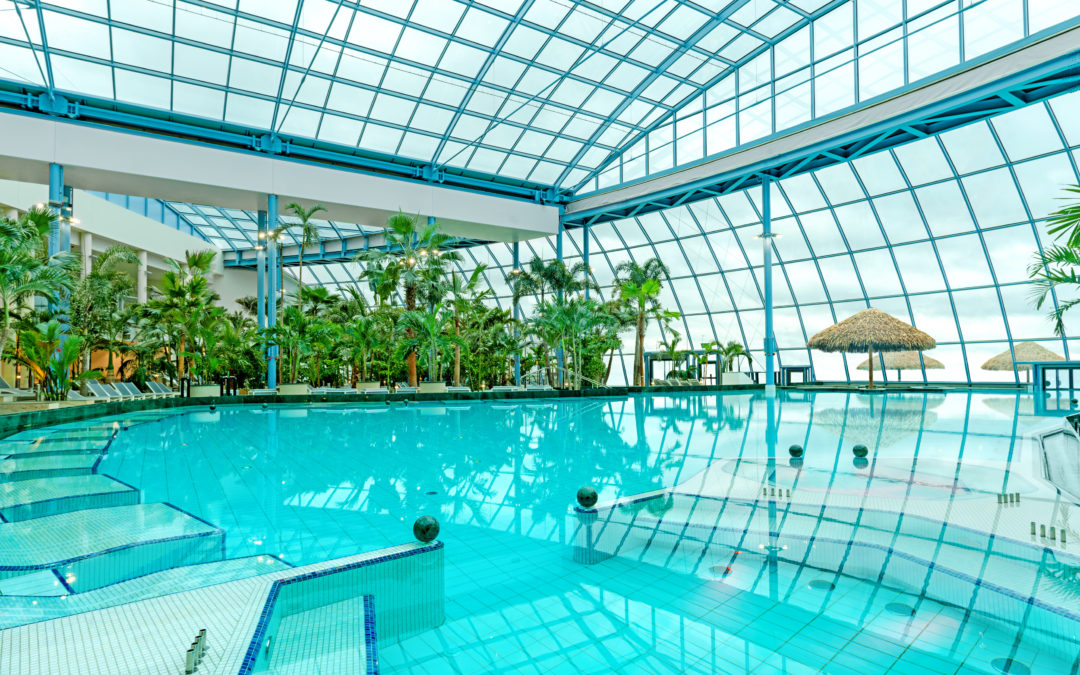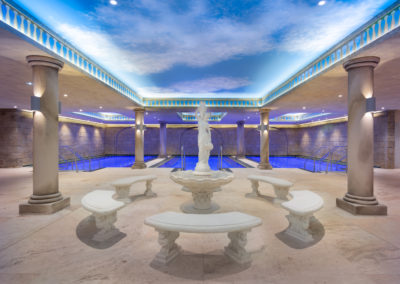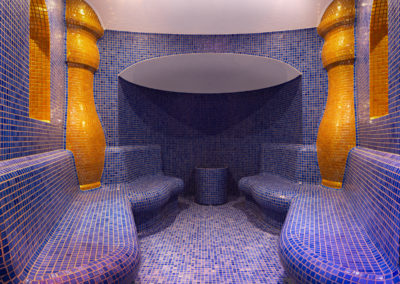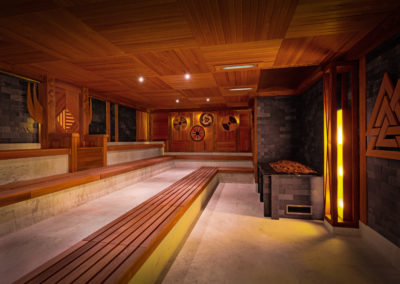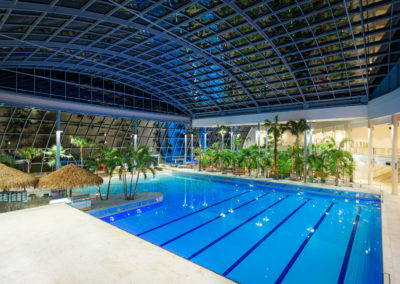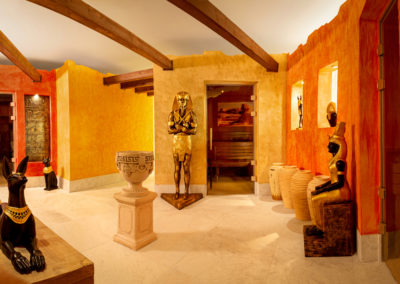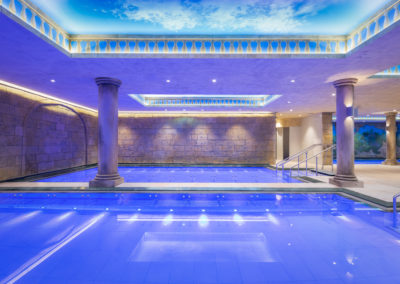Suntago Water World, which claims to be the largest covered waterpark in Europe, opens its doors to the public on Thursday.
Located 50 kilometres south-west of Warsaw, the facility is the first stage in the development of Park of Poland, which, once complete, will be Europe’s second-largest entertainment complex. A theme park, hotels, shopping centre and conference venues are due to follow the waterpark.
For now, Suntago Water World offers 18 swimming pools with a total area of 3,500 square metres; 32 water slides totalling 3.2 kilometres in length (including Europe’s longest slide at 320 metres); and a 40,000 square metre “tropical” garden complete with imported palm trees.

What to expect
An adult day ticket to access all areas of the waterpark costs 139 zloty, with lower prices applying for weekday entry, for concessions, as well as for shorter timed entry.
The park is warmed to tropical temperatures and consists of three distinct sections: the Jamango Water Jungle, Relax Suntago, and the Saunaria Suntago.
Jamango is the principal area for families. It boasts various swimming pools, a “lazy river”, a wave pool with retractable roof, an artificial surf park, and the waterslides, the longest of which cuts through the park’s lobby and drops five storeys to ground level.
The other two areas are only open to guests over the age of 16. The Relax zone contains the majority of the park’s 700 imported palm trees dotted around tropical gardens, as well as heated thermal pools and a swim-up bar.
A semi-submerged revolving door leads from the main pool to an outdoor area where guests can take in the cool Polish air from the safety of the thermally heated water. A separate room houses baths infused variously with Dead Sea salt, potassium, sulphur, and other minerals claimed to have curative properties.

The final section of the park, the saunarium, features yet more sunbeds and a network of saunas, steam rooms, and relaxation areas set to different temperatures and humidities, ranging from -12 degrees Celsius in “Mont Blanc” to 95 degrees in “Valhalla”.
The suite of rooms collectively known as the “Egyptian village” features an eccentric collection of handmade “ancient” artefacts adorning the walls and abutting the “Korean leisure room” and the “Maldives beach sauna”, creating a culturally and geographically confusing experience.
This part of the park also features the spa, where guests willing to part with more money are able to enjoy state-of-the-art beauty treatments and massages.
A huge investment
Park of Poland is the principal development project of Global City Holdings (GCH), an entertainment and real estate developer. GCH has reportedly already committed over 700 million zloty to the first stage of development, which they claim is one of the largest private investments in Polish history.
Father and son duo Moshe and Idan Greidinger – respectively the founder of GCH and the CEO of Park of Poland – proclaim that the park represents not just a novel attraction, but a “new kind of holiday opportunity close to home” available all year round without the need to drive long distances or get on a plane.
The timing of the next stages of the development has not officially been announced, but the an accommodation complex is reportedly nearing completion and a hotel and conference centre is in the process of obtaining environmental permits. The waterpark itself was completed behind schedule, having originally been intended to open last year.
The municipal authorities in Mszczonów, the nearest town to the site, have been closely involved in the development. Józef Grzegorz Kurek, the town’s mayor, said that Mszczonów contributed “a couple of million zloty”, mostly towards road construction.
In its early phase, the park will have 350 permanent employees, of which the mayor estimates 30% will be local. He admitted that at least until the end of the year, Suntago would not pay taxes into Mszczonów’s coffers, creating uncertainty around when the town could expect a return on its investment.
The environmental impact of the park is offset by the use of naturally heated thermal water, which is also able to power the air-conditioning system. The developers claim that as much as two thirds of the park’s energy is obtained through renewable sources, though they aim to eventually reach total net carbon neutrality.
All images: Park of Poland press materials. The author visited the park as an invited guest at a pre-opening media day.

Percy Metcalfe is an American Fulbright student located in Warsaw for the academic year of 2019/20. He is carrying out a research project on the performance of national identity in the Polish-U.S. bilateral relationship at the University of Warsaw while also working part time for Notes from Poland.
